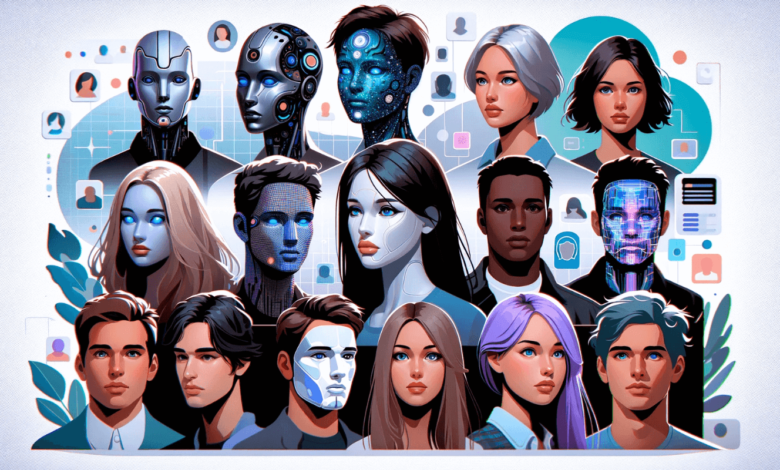AI-Powered Hyper-Realistic Avatars in Digital Media

The emergence of AI-powered hyper-realistic avatars marks a significant shift in digital media. These avatars leverage cutting-edge rendering techniques and deep learning to replicate human-like expressions and movements. Their integration spans various industries, from marketing to education, enhancing user experiences. However, the implications of such technology pose critical questions about identity and authenticity. As these digital personas gain prominence, the boundaries of reality and representation blur, prompting deeper exploration of their impact on society.
The Technology Behind Hyper-Realistic Avatars
As advancements in artificial intelligence continue to reshape digital interactions, the technology behind hyper-realistic avatars emerges as a fascinating intersection of machine learning, computer graphics, and human psychology.
Avatar rendering techniques leverage sophisticated algorithms to create lifelike visuals, while facial animation employs deep learning models to mimic human expressions.
This synergy not only enhances user experience but also challenges perceptions of identity and presence in virtual environments.
Applications Across Various Industries
Hyper-realistic avatars are finding diverse applications across various industries, showcasing their versatility beyond entertainment and gaming.
In sectors like marketing and education, these avatars serve as virtual influencers, enhancing brand engagement and knowledge dissemination.
Furthermore, gaming innovations leverage these digital entities to create immersive experiences, transforming user interactions and redefining the boundaries of virtual environments, ultimately enriching both personal and professional landscapes.
Enhancing Audience Engagement and Interaction
While traditional methods of audience engagement often rely on passive consumption, the introduction of AI-powered hyper-realistic avatars revolutionizes the way interactions occur.
These avatars enable deep audience connection through tailored interactions, fostering a sense of presence and participation.
Avatar personalization allows users to express individuality, enhancing engagement by creating a more immersive experience that resonates with diverse audiences, ultimately transforming digital interaction landscapes.
Ethical Considerations in the Age of Digital Avatars
The rise of digital avatars brings forth a myriad of ethical considerations that demand careful examination, particularly regarding identity, consent, and representation.
Issues surrounding identity representation challenge authenticity, while privacy concerns arise as personal data is utilized for avatar creation.
The balance between creative freedom and ethical responsibility becomes crucial, prompting a reevaluation of how society navigates the complexities of digital personas in an evolving landscape.
Also read: AI-Powered Image and Video Metadata Generation
Conclusion
The emergence of AI-powered hyper-realistic avatars marks a pivotal shift in digital media, promising unprecedented engagement across diverse sectors. However, as their capabilities expand, so do the complexities surrounding identity and authenticity. The theory that these avatars can foster deeper human connections is compelling, yet it necessitates critical examination of the ethical implications they entail. Balancing innovation with responsibility will be crucial to harnessing their full potential while safeguarding individual privacy and societal values in an increasingly digital landscape.





